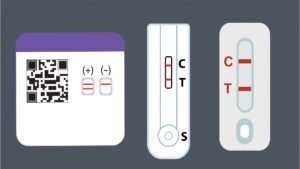Pachymetry Test for Corneal Thickness
Understanding the Pachymetry Test for Corneal Thickness
What is the Pachymetry Test?
The pachymetry test is a simple and painless procedure used to measure the thickness of the cornea. The cornea, the clear front part of the eye, plays a crucial role in vision, and understanding its thickness can help detect various eye conditions.
Why is Corneal Thickness Important?
Corneal thickness, as measured by pachymetry, is significant in the field of eye care for several reasons. Changes in the thickness of the cornea can indicate underlying health conditions. For instance, diseases like Fuchs’ Dystrophy cause fluid buildup in the cornea, increasing its thickness. Similarly, extended use of contact lenses can lead to corneal inflammation, which might not be visible under a microscope but can be detected through changes in thickness.
Additionally, corneal thickness is critical when it comes to refractive surgeries like LASIK. Knowing the corneal thickness helps doctors determine if a person is a suitable candidate for laser eye surgery, as the procedure involves removing corneal tissue, which thins the cornea. In some cases, individuals may have naturally thin corneas, which could complicate or even preclude surgery.
The Role of Pachymetry in Glaucoma Management
Pachymetry has also become a vital tool in managing glaucoma. This condition is characterized by increased intraocular pressure, which can lead to optic nerve damage and even blindness. Since corneal thickness can influence the accuracy of intraocular pressure measurements, measuring it can help doctors better assess the risk of glaucoma. Research from the Ocular Hypertensive Study has made pachymetry an essential component in evaluating glaucoma risk.
How is Pachymetry Performed?
There are two main methods for conducting a pachymetry test: ultrasound and optical techniques.
-
Ultrasound Pachymetry
Ultrasound pachymetry uses sound waves to measure the thickness of the cornea. It is cost-effective and portable, though it requires careful technique. A probe is placed against the cornea, and any slight movement can affect the accuracy of the reading. Some ultrasound devices are specifically designed for glaucoma testing and include risk calculators. -
Optical Pachymetry
Optical pachymetry methods, which include devices like specular microscopy and optical coherence tomography (OCT), are non-invasive and do not require direct contact with the cornea. OCT pachymetry, in particular, is gaining popularity for its ability to measure corneal thickness accurately without touching the eye. Another advanced optical method uses Scheimpflug imaging to measure both central and peripheral corneal thickness.
Advantages and Limitations of Optical Pachymetry
While optical pachymetry provides highly accurate readings and eliminates the need for contact with the cornea, it can be more expensive. Insurance companies tend to cover ultrasound pachymetry more frequently, and optical pachymetry might require out-of-pocket expenses for patients.
Key Takeaways:
-
Corneal thickness is an important factor in diagnosing and managing various eye conditions, including glaucoma and refractive surgery eligibility.
-
Pachymetry is a painless and efficient way to measure corneal thickness.
-
Both ultrasound and optical methods are used in pachymetry, with each offering unique advantages and challenges.
Join Our Community for More Eye Care Insights
Stay informed with the latest updates and tips on eye health. Subscribe to our newsletter for more expert advice and eye care guidance!






